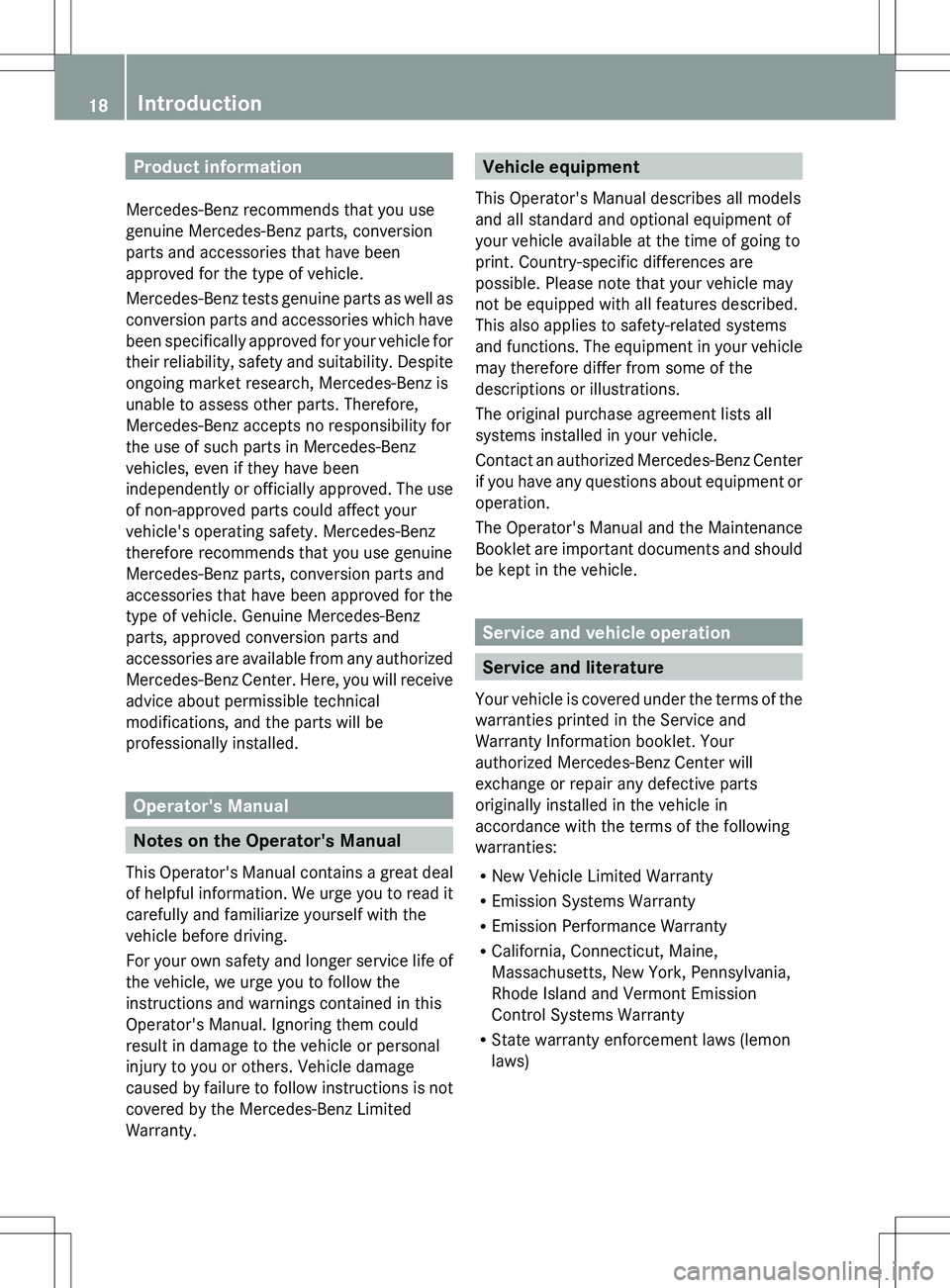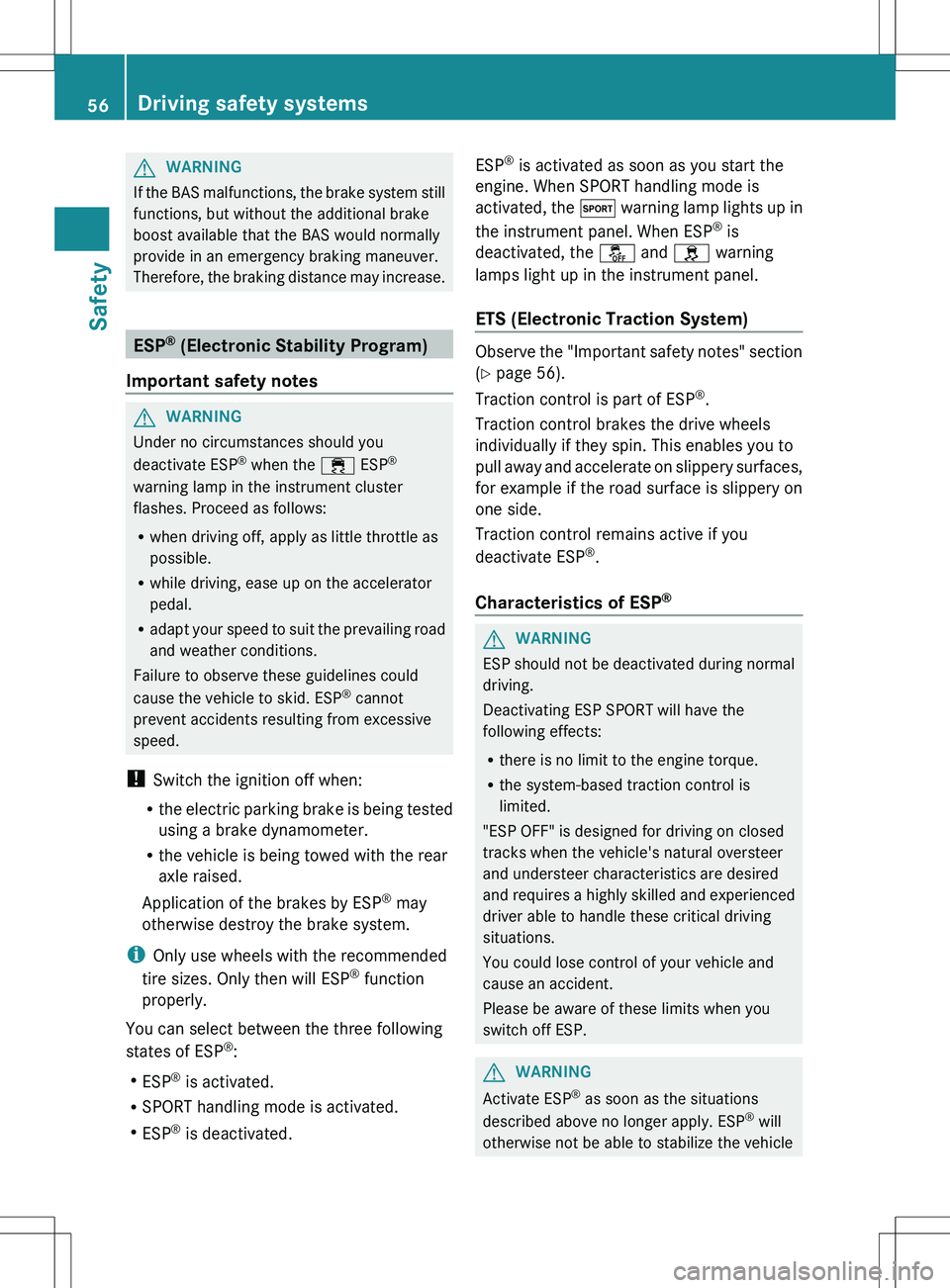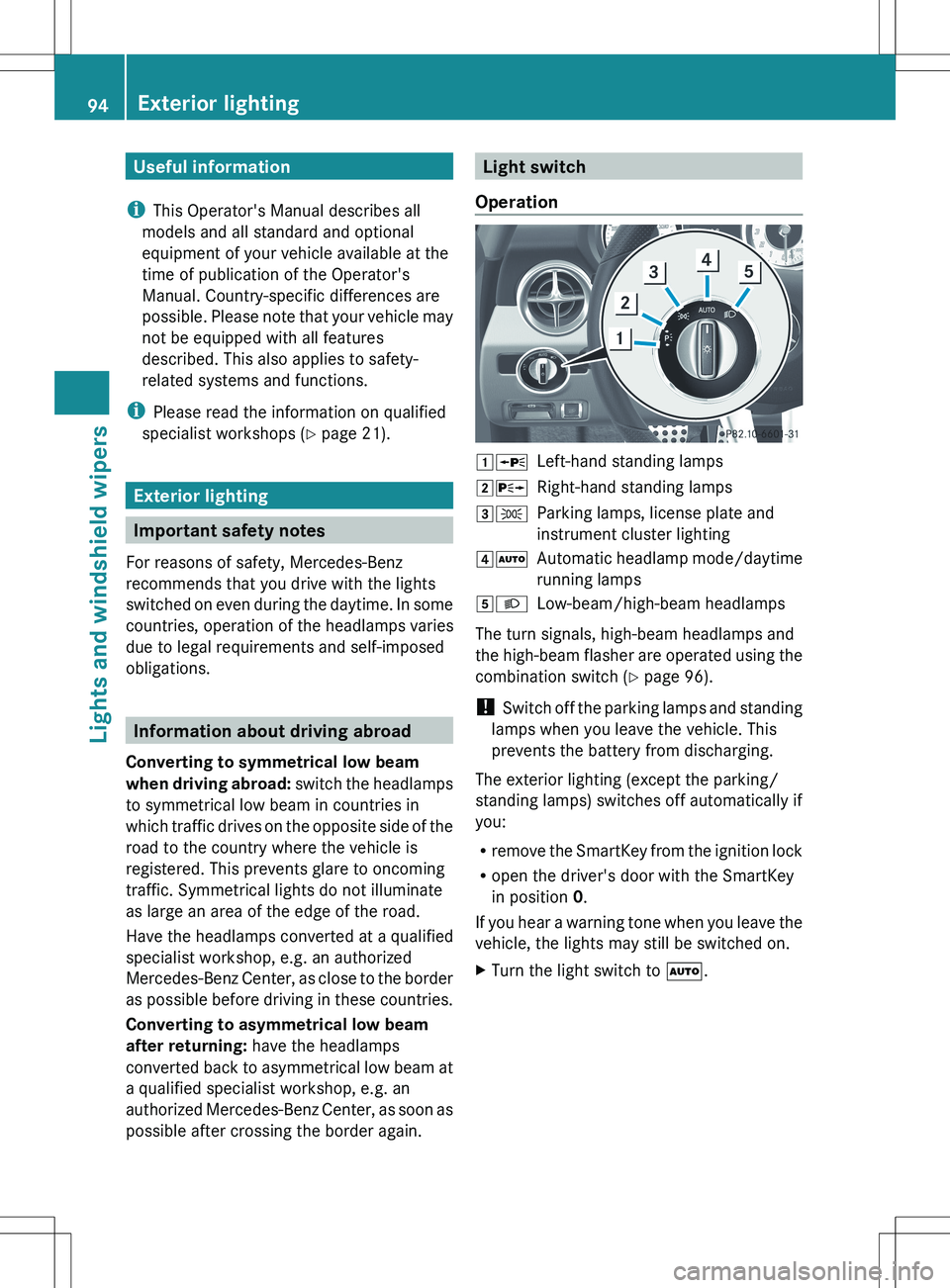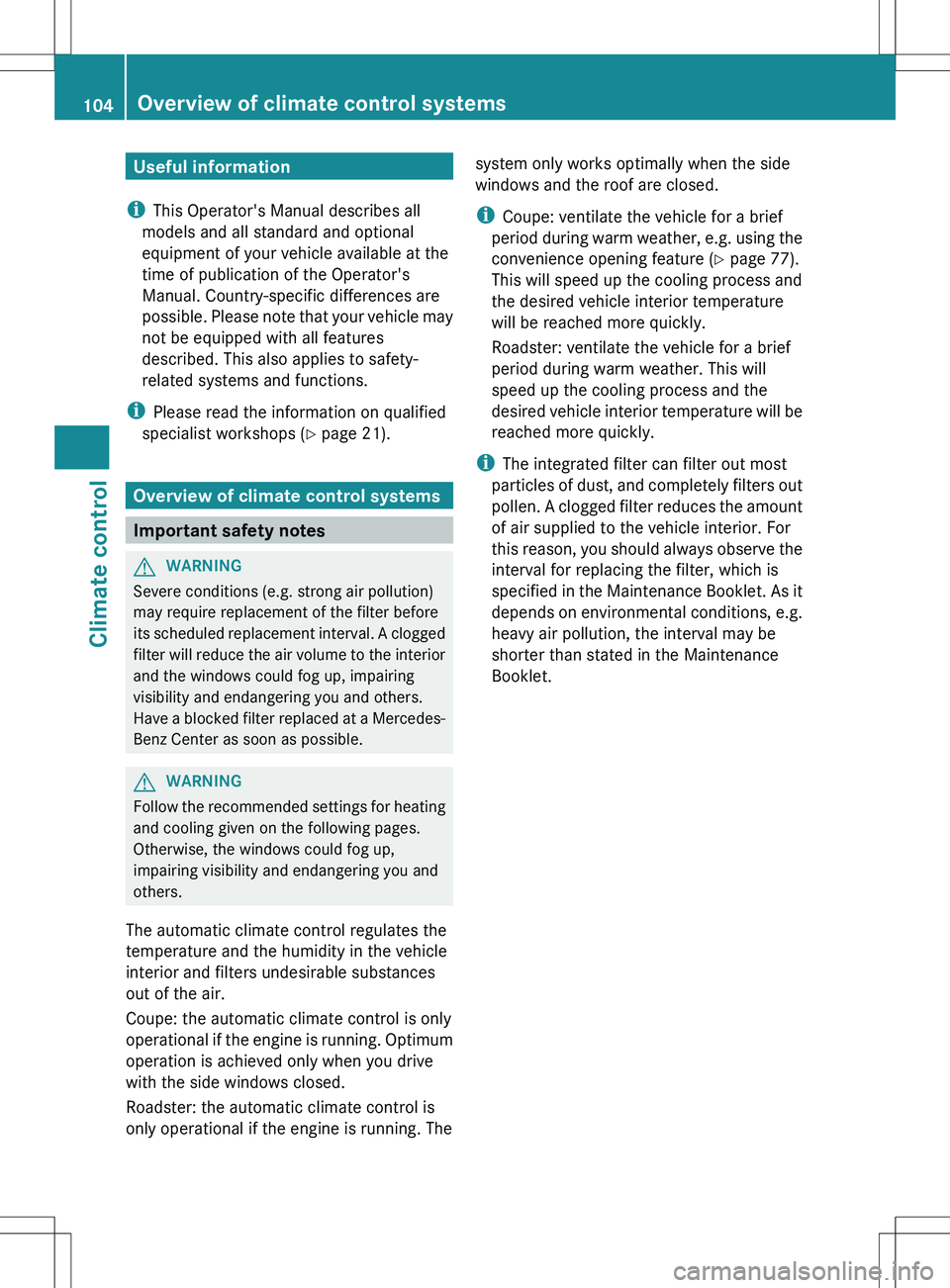2012 MERCEDES-BENZ SLS AMG COUPE ECO mode
[x] Cancel search: ECO modePage 8 of 288

Problems with cooling with air
dehumidification ............................ 107
Problem with the rear window
defroster ........................................ 109
Refrigerant ..................................... 282
Setting the air distribution .............107
Setting the airflow .........................108
Setting the air vents ......................110
Setting the temperature ................107
Switching air-recirculation mode
on/off ............................................ 109
Switching on/off ........................... 106
Switching the MONO function on/
off .................................................. 108
Switching the rear window
defroster on/off ............................ 109
Cockpit
Overview .......................................... 26
see Instrument cluster
COMAND
see separate operating instructions
Combination switch ............................ 96
Consumption statistics (on-board
computer) .......................................... 152
Convenience closing feature .............. 77
Convenience opening feature ............ 77
see Opening/closing the side
windows (all)
Coolant
Display message ............................ 177
Coolant (engine)
Checking the level .........................220
Notes ............................................. 283
Temperature (on-board computer) . 160
Cooling
see Climate control
Crash-responsive emergency
lighting ................................................. 98
Cruise control Cruise control lever .......................137
Deactivating ................................... 138
Display message ............................ 180
Driving system ............................... 136
Function/notes ............................. 136
Important safety notes ..................136
LIM indicator lamp .........................137Setting a speed .............................. 137
Storing and maintaining current
speed ............................................. 137
Cup holder
Center console .............................. 202
Important safety notes ..................202
Curb weight
see Technical data
Customer Assistance Center (CAC) ... 22
Customer Relations Department ....... 22
D
Dashboard see Cockpit
Data
see Technical data
Daytime running lamps
Display message ............................ 175
Switching on/off (on-board
computer) ...................................... 157
Switching on/off (switch) ................95
Dealership
see Qualified specialist workshop
Delayed switch-off
Exterior lighting (on-board
computer) ...................................... 158
Interior lighting .............................. 159
Diagnostics connection ...................... 21
Digital speedometer ......................... 152
Display (cleaning instructions) ........ 228
Display messages ASSYST PLUS service interval
display ........................................... 222
Calling up (on-board computer) .....164
Driving systems ............................. 180
Engine ............................................ 176
Hiding (on-board computer) ...........164
Lights ............................................. 173
Safety systems .............................. 170
Service interval display ..................222
SmartKey ....................................... 185
Tires ............................................... 181
Vehicle ........................................... 183
Distance recorder ............................. 152
see Odometer
see Trip odometer
6Index
Page 16 of 288

Paddle shifters ............................... 123
Storing settings (memory
function) .......................................... 91
Stopwatch (RACETIMER) ................... 161
Stowage compartments Armrest (under) ............................. 201
Cup holders ................................... 202
Glove box ....................................... 200
Important safety information .........200
Parcel net ...................................... 201
Rear wall ........................................ 201
Stowage space
Center console .............................. 201
Center console (rear) .....................201
Summer opening
see Convenience opening feature
Summer tires ..................................... 252
Sun visor ............................................ 202
Supplemental Restraint System see SRS (Supplemental Restraint
System)
Surround lighting (on-board
computer) .......................................... 158
Suspension tuning AMG adaptive sport suspension
system ........................................... 138
Switching air-recirculation mode
on/off ................................................. 109
Switching off the alarm (ATA) ............ 59
T
Tachometer ........................................ 148
Tail lamps Display message ............................ 175
Tank
see Fuel tank
Tank content
Fuel gauge ....................................... 27
Technical data ................................... 284
Notes ............................................. 276
Tires/wheels ................................. 272
TELEAID
Call priority .................................... 209
Display message ............................ 173
Downloading destinations
(COMAND) ..................................... 209
Emergency call .............................. 206
Important safety notes ..................205
Locating a stolen vehicle ...............210
MB info call button ........................208
Remote vehicle locking ..................210
Roadside Assistance button ..........207
Search & Send ............................... 209
Self-test ......................................... 205
System .......................................... 205
Telephone
Accepting a call ............................. 155
Menu (on-board computer) ............155
Number from the phone book ........ 156
Redialing ........................................ 156
Rejecting/ending a call .................156
Temperature
Coolant (on-board computer) ......... 160
Engine oil ....................................... 148
Engine oil (on-board computer) ...... 160
Outside temperature ...................... 149
Theft deterrent systems
ATA (Anti-Theft Alarm system) .........59
Immobilizer ...................................... 59
Theft-deterrent systems
Tow-away alarm ............................... 60
Timing (RACETIMER) ......................... 161
TIREFIT kit .......................................... 233
Tire pressure Calling up (on-board computer) .....257
Checking manually ........................256
Display message .................... 181, 183
Maximum ....................................... 256
Notes ............................................. 254
Not reached (TIREFIT) ....................235
Reached (TIREFIT) ..........................235
Recommended ............................... 253
Tire pressure monitoring system
Function/notes ............................. 257
Restarting ...................................... 259
Warning lamp ................................. 196
Tires
Aspect ratio (definition) .................270
Average weight of the vehicle
occupants (definition) ....................269
Bar (definition) ............................... 268
Characteristics .............................. 268
Checking ........................................ 251
Definition of terms .........................268
Direction of rotation ......................27214Index
Page 20 of 288

Product information
Mercedes-Benz recommends that you use
genuine Mercedes-Benz parts, conversion
parts and accessories that have been
approved for the type of vehicle.
Mercedes-Benz tests genuine parts as well as
conversion parts and accessories which have
been specifically approved for your vehicle for
their reliability, safety and suitability. Despite
ongoing market research, Mercedes-Benz is
unable to assess other parts. Therefore,
Mercedes-Benz accepts no responsibility for
the use of such parts in Mercedes-Benz
vehicles, even if they have been
independently or officially approved. The use
of non-approved parts could affect your
vehicle's operating safety. Mercedes-Benz
therefore recommends that you use genuine
Mercedes-Benz parts, conversion parts and
accessories that have been approved for the
type of vehicle. Genuine Mercedes-Benz
parts, approved conversion parts and
accessories are available from any authorized
Mercedes-Benz Center. Here, you will receive
advice about permissible technical
modifications, and the parts will be
professionally installed.
Operator's Manual
Notes on the Operator's Manual
This Operator's Manual contains a great deal
of helpful information. We urge you to read it
carefully and familiarize yourself with the
vehicle before driving.
For your own safety and longer service life of
the vehicle, we urge you to follow the
instructions and warnings contained in this
Operator's Manual. Ignoring them could
result in damage to the vehicle or personal
injury to you or others. Vehicle damage
caused by failure to follow instructions is not
covered by the Mercedes-Benz Limited
Warranty.
Vehicle equipment
This Operator's Manual describes all models
and all standard and optional equipment of
your vehicle available at the time of going to
print. Country-specific differences are
possible. Please note that your vehicle may
not be equipped with all features described.
This also applies to safety-related systems
and functions. The equipment in your vehicle
may therefore differ from some of the
descriptions or illustrations.
The original purchase agreement lists all
systems installed in your vehicle.
Contact an authorized Mercedes-Benz Center
if you have any questions about equipment or
operation.
The Operator's Manual and the Maintenance
Booklet are important documents and should
be kept in the vehicle.
Service and vehicle operation
Service and literature
Your vehicle is covered under the terms of the
warranties printed in the Service and
Warranty Information booklet. Your
authorized Mercedes-Benz Center will
exchange or repair any defective parts
originally installed in the vehicle in
accordance with the terms of the following
warranties:
R New Vehicle Limited Warranty
R Emission Systems Warranty
R Emission Performance Warranty
R California, Connecticut, Maine,
Massachusetts, New York, Pennsylvania,
Rhode Island and Vermont Emission
Control Systems Warranty
R State warranty enforcement laws (lemon
laws)
18Introduction
Page 38 of 288

Useful information
i This Operator's Manual describes all
models and all standard and optional
equipment of your vehicle available at the
time of publication of the Operator's
Manual. Country-specific differences are
possible. Please note that your vehicle may
not be equipped with all features
described. This also applies to safety-
related systems and functions.
i Please read the information on qualified
specialist workshops ( Y page 21).
Occupant safety
Introduction
In this section, you will learn the most
important facts about the restraint system
components of the vehicle.
The restraint system consists of:
R seat belts
R child restraint systems
Additional protection is provided by:
R SRS (Supplemental Restraint System)
R air bag system components with:
- PASSENGER AIR BAG OFF indicator lamp
- front-passenger seat with Occupant
Classification System (OCS)
The different air bag systems work
independently of each other. The protective
functions of the system work in conjunction
with each other. Not all air bags are deployed
in an accident.
GWARNING
Modifications to or work improperly
conducted on restraint system components
or their wiring, as well as tampering with
interconnected electronic systems, can lead
to the restraint systems no longer functioning
as intended.
Air bags or Emergency Tensioning Devices
(ETDs), for example, could deploy
inadvertently or fail to deploy in accidents
although the deceleration threshold for air
bag deployment is exceeded. Therefore,
never modify the restraint systems. Do not
tamper with electronic components or their
software.
i See "Children in the vehicle"
( Y page 51) for more information on
infants and children traveling with you in
the vehicle and restraints for infants and
children.
SRS (Supplemental Restraint System)
Introduction
SRS reduces the risk of occupants coming
into contact with the vehicle's interior in the
event of an accident. It can also reduce the
effect of the forces to which occupants are
subjected during an accident.
SRS consists of:
R 6 SRS warning lamp
R air bags
R air bag control unit (with crash sensors)
R Emergency Tensioning Devices
R seat belt force limiters
SRS warning lamp
SRS functions are checked regularly when
you switch on the ignition and when the
engine is running. Therefore, malfunctions
can be detected in good time.
The 6 SRS warning lamp in the instrument
cluster lights up when the ignition is switched
on. It goes out no later than a few seconds
after the engine is started.
36Occupant safetySafety
Page 58 of 288

GWARNING
If the BAS malfunctions, the brake system still
functions, but without the additional brake
boost available that the BAS would normally
provide in an emergency braking maneuver.
Therefore, the braking distance may increase.
ESP ®
(Electronic Stability Program)
Important safety notes
GWARNING
Under no circumstances should you
deactivate ESP ®
when the ÷ ESP®
warning lamp in the instrument cluster
flashes. Proceed as follows:
R when driving off, apply as little throttle as
possible.
R while driving, ease up on the accelerator
pedal.
R adapt your speed to suit the prevailing road
and weather conditions.
Failure to observe these guidelines could
cause the vehicle to skid. ESP ®
cannot
prevent accidents resulting from excessive
speed.
! Switch the ignition off when:
R the electric parking brake is being tested
using a brake dynamometer.
R the vehicle is being towed with the rear
axle raised.
Application of the brakes by ESP ®
may
otherwise destroy the brake system.
i Only use wheels with the recommended
tire sizes. Only then will ESP ®
function
properly.
You can select between the three following
states of ESP ®
:
R ESP ®
is activated.
R SPORT handling mode is activated.
R ESP ®
is deactivated.
ESP ®
is activated as soon as you start the
engine. When SPORT handling mode is
activated, the M warning lamp lights up in
the instrument panel. When ESP ®
is
deactivated, the å and h warning
lamps light up in the instrument panel.
ETS (Electronic Traction System)
Observe the "Important safety notes" section
( Y page 56).
Traction control is part of ESP ®
.
Traction control brakes the drive wheels
individually if they spin. This enables you to
pull away and accelerate on slippery surfaces,
for example if the road surface is slippery on
one side.
Traction control remains active if you
deactivate ESP ®
.
Characteristics of ESP ®
GWARNING
ESP should not be deactivated during normal
driving.
Deactivating ESP SPORT will have the
following effects:
R there is no limit to the engine torque.
R the system-based traction control is
limited.
"ESP OFF" is designed for driving on closed
tracks when the vehicle's natural oversteer
and understeer characteristics are desired
and requires a highly skilled and experienced
driver able to handle these critical driving
situations.
You could lose control of your vehicle and
cause an accident.
Please be aware of these limits when you
switch off ESP.
GWARNING
Activate ESP ®
as soon as the situations
described above no longer apply. ESP ®
will
otherwise not be able to stabilize the vehicle
56Driving safety systemsSafety
Page 59 of 288

if the vehicle starts to skid or a wheel starts
to spin.
ESP ®
monitors driving stability and traction,
i.e. power transmission between the tires and
the road surface.
If ESP ®
detects that the vehicle is deviating
from the direction desired by the driver, one
or more wheels are braked to stabilize the
vehicle. If necessary, the engine output is also
modified to keep the vehicle on the desired
course within physical limits. ESP ®
assists
the driver when pulling away on wet or
slippery roads. ESP ®
can also stabilize the
vehicle during braking.
If ESP ®
intervenes, the h warning lamp
flashes in the instrument cluster.GWARNING
If the h warning lamp in the instrument
cluster flashes, proceed as follows:
R do not deactivate ESP ®
under any
circumstances
R only depress the accelerator pedal as far as
necessary when pulling away.
R adapt your driving style to suit the
prevailing road and weather conditions.
Otherwise, the vehicle could go into a skid.
ESP ®
cannot reduce the risk of an accident if
you drive too fast. ESP ®
cannot override the
laws of physics.
i Only use wheels with the recommended
tire sizes. Only then will ESP ®
function
properly.
ESP ®
is activated automatically when the
engine is running. In the following situations,
it may be better to activate SPORT handling
mode or deactivate ESP ®
:
R when using snow chains
R in deep snow
R on sand or gravel
GWARNING
Activate ESP ®
as soon as the situations
described above no longer apply. Otherwise,
ESP ®
will only be able to stabilize the vehicle
to a limited degree if the vehicle starts to skid
or if a wheel starts to spin.
Characteristics when ESP ®
is
deactivated
When you deactivate ESP ®
:
R ESP ®
no longer improves driving stability.
R engine torque is no longer limited and the
drive wheels are able to spin. The spinning
wheels produce a cutting effect for better
traction.
R traction control is still activated.
R ESP ®
still provides support when you brake
firmly.
i If ESP ®
is deactivated and one or more
wheels start to spin, the h warning lamp
in the instrument cluster does not flash. In
such situations, ESP ®
will not stabilize the
vehicle.
Deactivating/activating ESP ®
ESP
®
is activated as soon as you start the
engine.
XTo deactivate ESP ®
: press and hold down
button : until the h and å warning
lamps in the instrument panel light up.
The OFF message appears in the
multifunction display.Driving safety systems57SafetyZ
Page 96 of 288

Useful information
i This Operator's Manual describes all
models and all standard and optional
equipment of your vehicle available at the
time of publication of the Operator's
Manual. Country-specific differences are
possible. Please note that your vehicle may
not be equipped with all features
described. This also applies to safety-
related systems and functions.
i Please read the information on qualified
specialist workshops ( Y page 21).
Exterior lighting
Important safety notes
For reasons of safety, Mercedes-Benz
recommends that you drive with the lights
switched on even during the daytime. In some
countries, operation of the headlamps varies
due to legal requirements and self-imposed
obligations.
Information about driving abroad
Converting to symmetrical low beam
when driving abroad: switch the headlamps
to symmetrical low beam in countries in
which traffic drives on the opposite side of the
road to the country where the vehicle is
registered. This prevents glare to oncoming
traffic. Symmetrical lights do not illuminate
as large an area of the edge of the road.
Have the headlamps converted at a qualified
specialist workshop, e.g. an authorized
Mercedes-Benz Center, as close to the border
as possible before driving in these countries.
Converting to asymmetrical low beam
after returning: have the headlamps
converted back to asymmetrical low beam at
a qualified specialist workshop, e.g. an
authorized Mercedes-Benz Center, as soon as
possible after crossing the border again.
Light switch
Operation1 WLeft-hand standing lamps2XRight-hand standing lamps3TParking lamps, license plate and
instrument cluster lighting4 ÃAutomatic headlamp mode/daytime
running lamps5 LLow-beam/high-beam headlamps
The turn signals, high-beam headlamps and
the high-beam flasher are operated using the
combination switch ( Y page 96).
! Switch off the parking lamps and standing
lamps when you leave the vehicle. This
prevents the battery from discharging.
The exterior lighting (except the parking/
standing lamps) switches off automatically if
you:
R remove the SmartKey from the ignition lock
R open the driver's door with the SmartKey
in position 0.
If you hear a warning tone when you leave the
vehicle, the lights may still be switched on.
XTurn the light switch to Ã.94Exterior lightingLights and windshield wipers
Page 106 of 288

Useful information
i This Operator's Manual describes all
models and all standard and optional
equipment of your vehicle available at the
time of publication of the Operator's
Manual. Country-specific differences are
possible. Please note that your vehicle may
not be equipped with all features
described. This also applies to safety-
related systems and functions.
i Please read the information on qualified
specialist workshops ( Y page 21).
Overview of climate control systems
Important safety notes
GWARNING
Severe conditions (e.g. strong air pollution)
may require replacement of the filter before
its scheduled replacement interval. A clogged
filter will reduce the air volume to the interior
and the windows could fog up, impairing
visibility and endangering you and others.
Have a blocked filter replaced at a Mercedes-
Benz Center as soon as possible.
GWARNING
Follow the recommended settings for heating
and cooling given on the following pages.
Otherwise, the windows could fog up,
impairing visibility and endangering you and
others.
The automatic climate control regulates the
temperature and the humidity in the vehicle
interior and filters undesirable substances
out of the air.
Coupe: the automatic climate control is only
operational if the engine is running. Optimum
operation is achieved only when you drive
with the side windows closed.
Roadster: the automatic climate control is
only operational if the engine is running. The
system only works optimally when the side
windows and the roof are closed.
i Coupe: ventilate the vehicle for a brief
period during warm weather, e.g. using the
convenience opening feature ( Y page 77).
This will speed up the cooling process and
the desired vehicle interior temperature
will be reached more quickly.
Roadster: ventilate the vehicle for a brief
period during warm weather. This will
speed up the cooling process and the
desired vehicle interior temperature will be
reached more quickly.
i The integrated filter can filter out most
particles of dust, and completely filters out
pollen. A clogged filter reduces the amount
of air supplied to the vehicle interior. For
this reason, you should always observe the
interval for replacing the filter, which is
specified in the Maintenance Booklet. As it
depends on environmental conditions, e.g.
heavy air pollution, the interval may be
shorter than stated in the Maintenance
Booklet.104Overview of climate control systemsClimate control